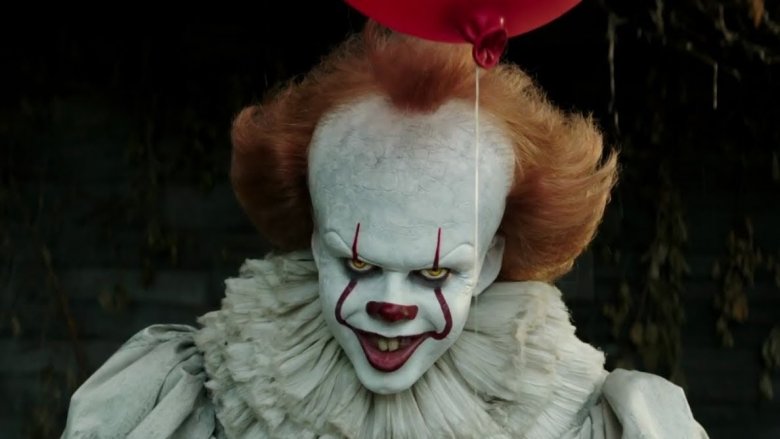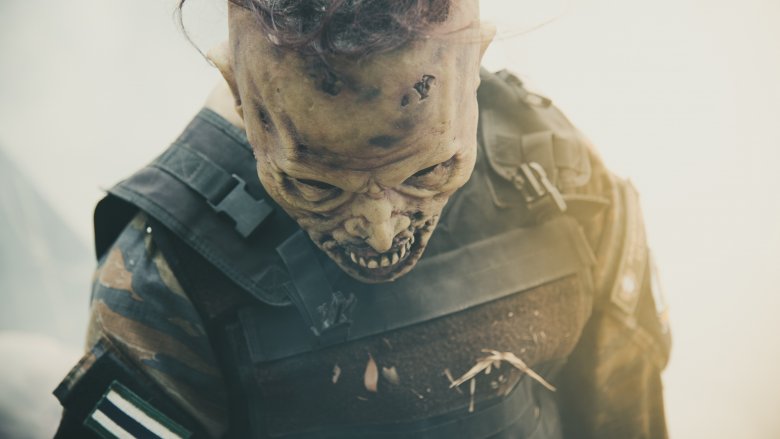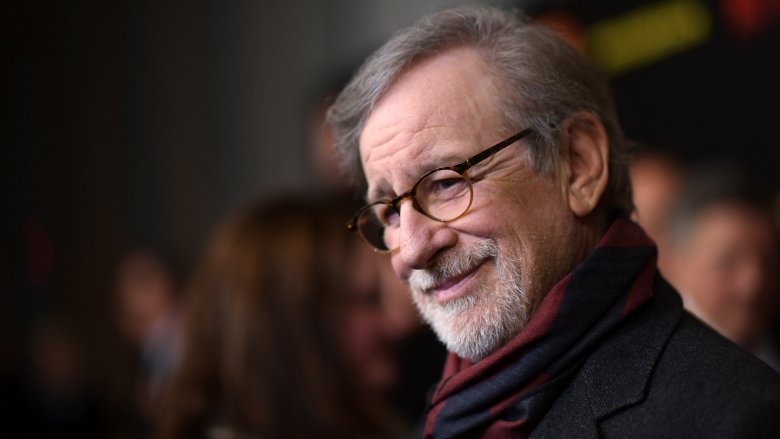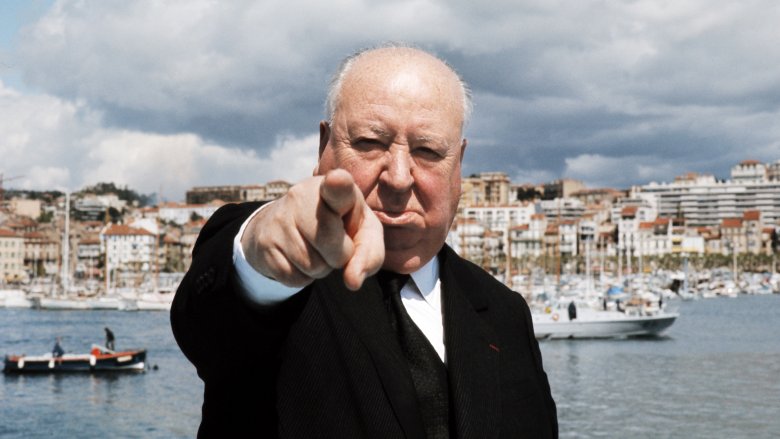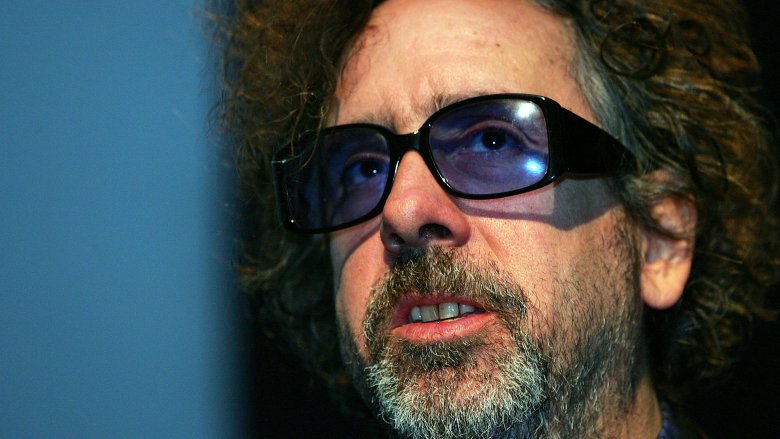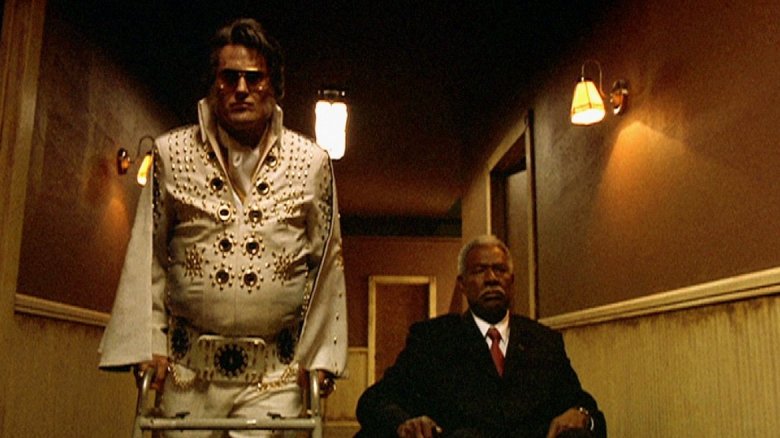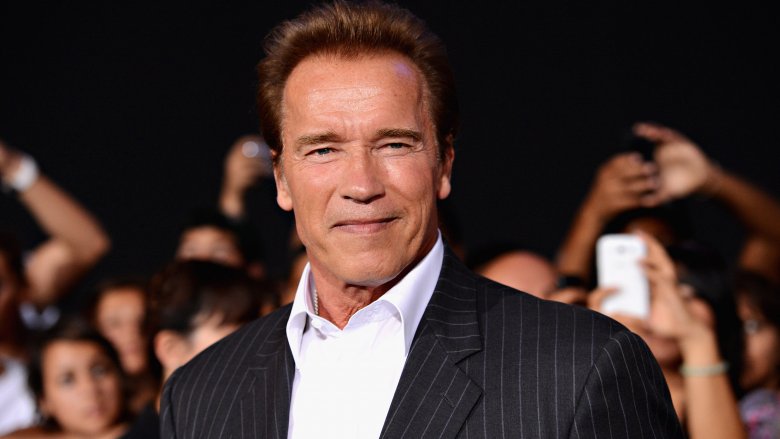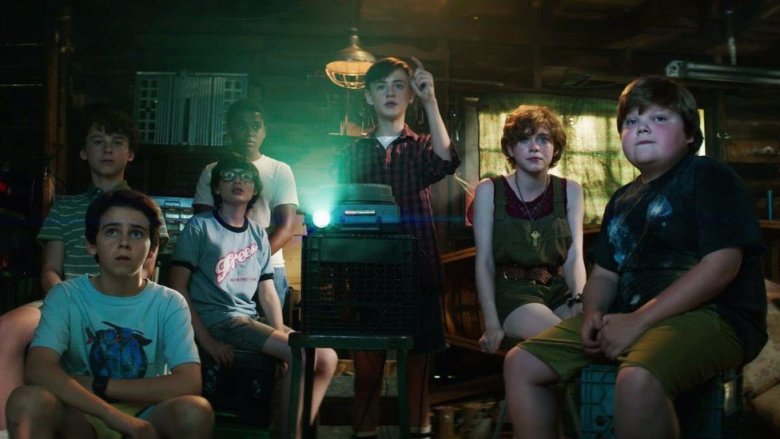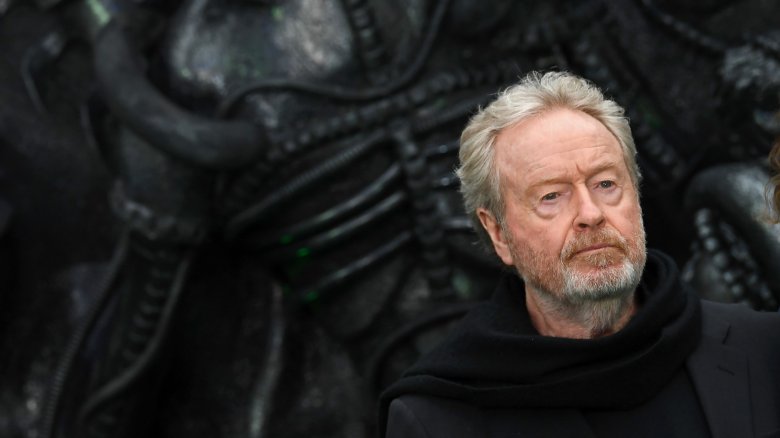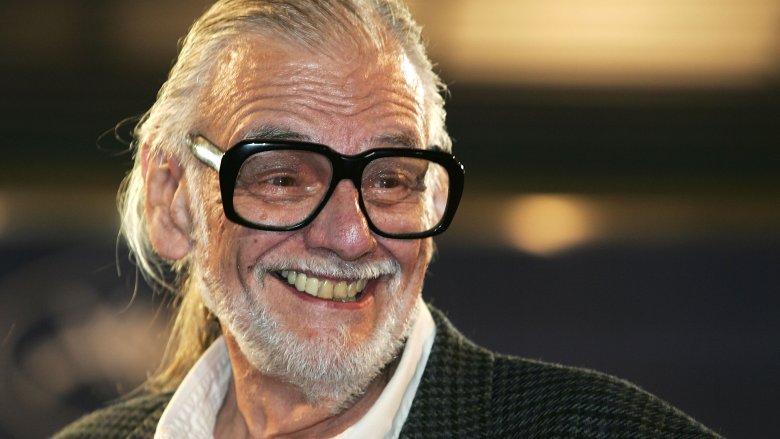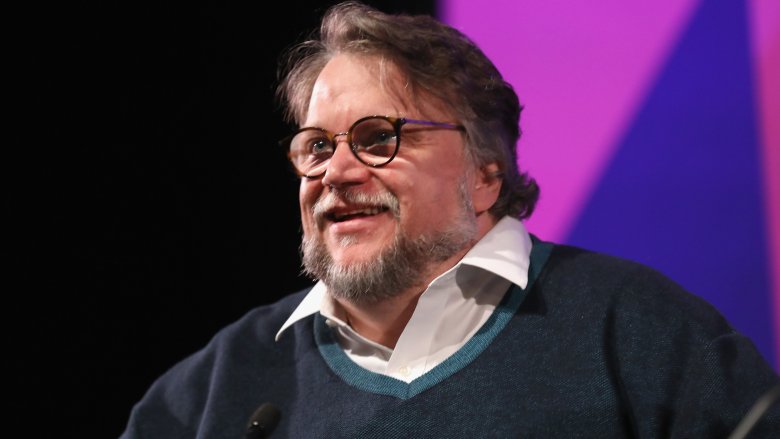The Greatest Horror Movies Never Made
What's the greatest horror movie ever made? Wait, hold up. Critics and horror fans have been debating that question for years. So let's ask something a little more interesting: what's the greatest horror movie never made?
See, filmmaking is incredibly difficult. With all the moving pieces and people involved, it's a miracle there are any movies made at all. And for each horror classic we watch every Halloween, there are a dozen scary stories that never made it to the big screen. These are the monster flicks that couldn't get financed or the spooky screenplays that never made it to the next stage. These movies involved major stars and big-deal directors, but despite the talent, these freaky films never haunted a single theater.
That's absolutely devastating, because a lot of these unmade projects would've been amazing. Still, it's fun to imagine all the scares and screams we could've had and wonder what films might've become iconic. From undead soldiers to Lovecraftian creatures, these are the greatest horror movies never made.
We almost got Special Ops zombies with John Carpenter's Shadow Company
When it comes to 1980s horror, it doesn't get any better than John Carpenter. The man gave us creepy classics like The Thing and Prince of Darkness. After working on They Live, Carpenter set his sights on Shadow Company, a movie about undead Special Ops soldiers with machine guns and bad attitudes.
The script was written by Fred Dekker and Shane Black, the same duo who wrote The Monster Squad and The Predator. The plot gets started when the bodies of six Special Ops soldiers — members of the titular "Shadow Company" — are found in a Cambodian temple, nearly two decades after the Vietnam War. The soldiers are brought back to a cemetery outside a California town, but thanks to a military experiment, the corpses come back to life.
Of course, these zombies are now free from fear and pain and anything that would stop them from gunning down anyone in sight. Making matters worse, they're are indestructible. Blow them in two, and they'll keep coming after you. Fortunately, rugged Vietnam vet Jake Pollard, who "might" be the missing member of Shadow Company, happens to be around when his old army buddies show up. And once they start blasting townsfolk to bits, Jake grabs his guns and goes to war.
Unfortunately, the movie fizzled out before production got going. However, the script did get Shane Black a lot of attention, and soon, he was making massive paydays with screenplays for action flicks like The Last Boy Scout and The Long Kiss Goodnight. So yeah, while we missed out on Shadow Company, at least we got Lethal Weapon.
The Wachowskis wanted to show us a cannibal soup kitchen with Carnivore
Before teaching us about kung fu and bending spoons, the Wachowskis were hoping to make a horror flick about soup kitchens and cannibalism. Their 1992 script Carnivore follows a homeless dude who travels to Chicago, hoping to become a chef. He eventually meets a gorgeous woman who leads him to a homeless shelter, where a woman named "Granny" serves the most delicious soup that anyone's ever tasted. Of course, the broth ain't exactly FDA approved.
As it turns out, Granny's secret recipe is human flesh stripped from the bodies of the rich and powerful. It seems Granny has an appreciation for irony, feeding the elite to the poor, and our hungry hero quickly gets an appetite for munching on his fellow man. And that's when the beautiful girl he met earlier starts looking really, really good, if you know what we mean.
While the concept impressed a lot of Hollywood suits, the crazy screenplay didn't really go anywhere until 2000, when it was rumored that George Romero of the Night of the Living Dead fame was going to direct. But like so many projects in Tinseltown, the film never made it to the feature screen, leaving us to wonder what a Wachowski horror film might look like. And no, the horrors of the Matrix sequels don't count.
Steven Spielberg could've given us evil aliens with Night Skies
Steven Spielberg is always awesome, but "the Beard" was on his A-game during the 1970s. And after the success of Close Encounters of the Third Kind, Columbia Pictures wanted Steven Spielberg to make a sci-fi follow-up. Spielberg agreed to produce the film, only he wasn't interested in making another movie about peaceful aliens who love music, colors, and mashed potato mountains. Instead, he wanted to focus on evil extraterrestrials that eviscerated cows and terrified kids.
Spielberg hired screenwriter John Sayles to pen a script called Night Skies, a tale about three-foot-tall aliens landing on Earth, dissecting a bunch of farm animals, and trapping a family inside their home. The movie was based on the 1955 Kelly-Hopkinsville encounter, and the aliens in the film would feature different powers, like hypnosis or the ability to tear flesh with the touch of a finger. Rick Baker of An American Werewolf in London was hired to design the creatures, and production designer Ron Cobb (Star Wars, Alien) was brought on to direct.
However, during pre-production in the early '80s, Spielberg had a change of heart. He realized he wasn't interested in telling such a scary story and nixed the project. But there was one part of the script he really liked, a subplot about a young boy bonding with a friendly extraterrestrial. Obviously, that inspired Spielberg to direct E.T., and the idea of a family plagued by supernatural entities served as the springboard for Poltergeist. While Night Skies sounds like it would've been awesome '80s fun, at least we got two cool movies out of the deal.
Alfred Hitchcock wanted to get edgy and experimental with Kaleidoscope
Alfred Hitchcock was the master of suspense, but in the late 1960s, he decided it was time to up his game and get super edgy. Inspired by English murderers Neville Heath and John George Haigh, Hitchcock wanted to direct the most disturbing serial killer movie ever made, a sickening picture called Kaleidoscope.
The plot would follow gay bodybuilder Willie Cooper, who seduces women and then murders them near bodies of water like shipyards and waterfalls. There would be stabbings, rape, and one death scene would supposedly be "one of the most brutal murders that's ever been imagined for an American screen." The film would feature nudity galore, and victims would even get dunked in acid baths, which would've been pretty intense for the '60s.
Hitchcock also wanted to get real experimental. Inspired by European filmmakers like Michelangelo Antonioni, he planned on using handheld cameras and natural lighting. He was going to shoot on location, and he wanted to use unknown actors. The movie sounds like it would've been revolutionary in both its bloodshed and cinematic language, but the executives at Universal shot the project down, claiming it was too shocking and too smutty.
It's said Hitchcock took this hard and allegedly broke down crying when he was told no. He eventually incorporated elements of Kaleidoscope into his 1972 film Frenzy, but that movie was a pale imitation of the vulgar vision Hitchcock originally had in mind.
Tim Burton wanted to give some love to Geek Love
Katherine Dunn's Geek Love is one of the most upsetting and beautiful novels ever written. The story follows a family of circus freaks and involves nightmarish subplots about parents who chemically mutilate their kids, a cult that's big into amputating limbs, and a woman who pays beautiful girls to disfigure themselves. The book was published in 1989, and it's been begging for a movie adaptation ever since. As it turns out, at one point, Tim Burton was circling this tale of vengeful freaks and spooky circuses.
It makes perfect sense. After all, Burton loves weirdos, and his filmography is filled with outsiders like the Penguin, Edward Scissorhands, and even poor little Dumbo. Plus, the dude has a near-fetish for anything circus-related. So in the '90s, Warner Bros. optioned the beloved novel, hoping Burton would team up with claymation master Henry Selick (The Nightmare Before Christmas, Coraline) to bring Dunn's macabre novel to life.
Unfortunately, Geek Love never got the love it deserves. In a 2006 interview, Burton admitted the book was near and dear to his heart and that he'd been "really interested in the project." However, the filmmaker said that adapting such a cherished classic was "quite daunting," and he wasn't sure if he could do the story "justice." Still, Burton said that if he could ever "get rid of that fear factor of destroying a great book," he might make the movie eventually. Flippers crossed we'll see it someday.
Paul Giamatti desperately wants Bubba Nosferatu and the Curse of the She-Vampires
Bubba Ho-Tep is one of the wildest horror movies ever made. It features an elderly Elvis Presley (Bruce Campbell) and a black John F. Kennedy (Ossie Davis) living in a retirement home and fighting a soul-sucking mummy. While the movie didn't set the box office on fire, it became a cult classic, and fans have long hoped for Elvis to come back and take care of some more supernatural business.
One of those fans happens to be Paul Giamatti, and in the 2000s, he teamed up with director Don Coscarelli for Bubba Nosferatu and the Curse of the She-Vampires. The plan was to make a movie that functioned as a prequel-sequel, similar to The Godfather Part II. In the sequel storyline, an aging Elvis Presley would be dealing with supernatural shenanigans in yet another nursing home, along with an immortal Sitting Bull. In the prequel part of the story, a younger Elvis is making a crappy vampire flick when he's attacked by a legion of thirsty female monsters. Fortunately, he's got a fang-proof suit, the Memphis Mafia, and a bunch of weapons to keep the sexy bloodsuckers at bay.
Better still, Giamatti was going to play the King's conniving manager, Colonel Tom Parker... who also turns out to be a vampire. For a while, it really looked like the Bubba Ho-Tep sequel might come to life, but Bruce Campbell allegedly didn't like the script and pulled out. The filmmakers tried replacing him with Ron Perlman, but movie studios just weren't interested in financing such a crazy film. Seriously though, if Hollywood had the guts to fund this insane horror flick, we'd never stop telling them, "Thank you, thank you very much."
Ridley Scott and Arnold Schwarzenegger almost teamed up for I Am Legend
Richard Matheson's novel I Am Legend has been turned into a film three times — once with Vincent Price, another time with Charlton Heston, and finally with Will Smith. But in the 1990s, Ridley Scott almost gave us an R-rated blockbuster where Arnold Schwarzenegger would fight an army of desiccated vampires.
The creatures were called "Hemocytes," and these infected humans would be thin, feral creatures that wear plastic bags to shield themselves from the sun. Their design was inspired by 17th-century wax sculptures, and unlike the CGI atrocities from the Will Smith film, these creatures were going to be completely practical.
As for Schwarzenegger, Scott was going to have the Austrian actor dig deep to play a depressed, lonely man. To help out Schwarzenegger — who's always been more of a movie star than a great thespian — a good chunk of the film was going to be completely silent. With barely any dialogue, Schwarzenegger's hero would make his way through an abandoned Los Angeles, capture a female Hemocyte, and try to cure her and the rest of her kind.
Unfortunately, Warner Bros. thought Scott's budget was too big, and they didn't want to risk all that cash on an R-rated movie. Plus, both the director and his leading man were coming off disappointing films. The plug was pulled, but in fairness, the setback allowed Ridley Scott to work on Gladiator, so at least we were still entertained.
Cary Fukunaga wanted to make a way darker It
Andy Muschietti's It is a fantastic and terrifying movie, but before Muschietti signed onto the project, the Stephen King adaptation was a passion project for Cary Fukunaga, the director behind TV shows like Maniac and the first season of True Detective. Fukunaga allegedly spent two years working on the script before he parted ways with Warner Bros. But why did he leave the Losers' Club behind? Well, according to Fukunaga, it's because his version was more character-focused... and way more violent.
Yeah, that's right. Fukunaga's version was going to be even darker than what ended up on-screen. For example, when Pennywise devours Georgie, the screenplay said we were going to see "Georgie's rag doll body flung left and right as Pennywise feeds on him and tries to pull him through the metal grate into the sewer." Pennywise would take the form of a rotting, naked woman to haunt poor Stan, and somebody was going to get devoured by a bunch of baby spiders.
Fukunaga's version was also going to focus more on the history of Derry, and we'd see Pennywise in the past, encouraging a racist group to burn down a black social club and prompting a 19th-century lumberjack to go Jack Torrance on some unlucky barflies. Perhaps the biggest difference is that in the end of the first film (Fukunaga also planned on splitting them in two), we'd actually see Pennywise's true form. Only instead of a massive spider like in the book, he'd resemble a massive starfish-like creature. There's no way of knowing if Fukunaga's version would've been better, but chances are good it would've had audiences floating out of the theater as fast as possible.
Ridley Scott and HR Giger almost reteamed for The Train
Ridley Scott and H.R. Giger made cinematic history when they joined forces for Alien, and the two almost teamed up again in the late '80s with another extraterrestrial horror flick originally called Dead Reckoning. Written by Jim Uhls (Fight Club), the movie was set in a Blade Runner-like future where a group of unlucky passengers find themselves trapped on a train with a murderous alien. According to Uhls, the alien was going to be "a humanoid with a genetically-altered brain that was intended to be used as the 'hard drive' in an artificial intelligence project." Eventually, the title was changed from Dead Reckoning to The Train, and Giger was brought on to design the futuristic locomotive.
And boy, did Giger go wild with his creations. In trademark Giger style, the train was going to be fleshy and grotesque. He went through multiple variations, with the most memorable being a train with a skull-like face and knife-like limbs. Unfortunately, the company that owned the project, Carolco, didn't like the direction Scott was going, and the English filmmaker walked away from the project. From there, producer Joel Silver (The Matrix, Die Hard, Lethal Weapon) renamed the movie Isobar and brought director Roland Emmerich and actors Sylvester Stallone and Kim Basinger onto the project. The design of the monster was changed multiple times, with one version being a creature that feeds on adrenaline and another being a plant-like alien that drains its victims of water. However, the production company went bankrupt, killing Dead Reckoning/The Train/Isobar before the movie ever left the station.
George Romero wanted to make a zombie rock musical
George Romero was the king of the zombies, and for over 40 years, the man filled the screen with undead ghouls. But while Romero was constantly bringing corpses back to life, he was also attached to a lot of projects that never escaped development hell. One of those unmade movies was Diamond Dead, a rock musical (inspired by Phantom of the Paradise) about a Goth woman who accidentally kills a rock band in some sort of "tragic subwoofer accident." Obviously, she feels bad about offing the rockers, so she makes a deal with Death to bring the band back. Resurrected and rejuvenated, the band goes on to make it big, but now that they're zombies, they've got a craving for playing shows and eating brains.
In true Romero fashion, the film would also work as a satire, taking aim at everything from religion and the government to rock fans and the music industry. There were also some pretty big names attached to the project. Richard Hartley, who wrote the music for The Rocky Horror Picture Show, wrote songs for the film, and Ridley Scott was even pushing for Diamond Dead to have its day. But according to Romero, nobody else in Hollywood "got it," and the director passed away before he could bring the band back to life.
Guillermo del Toro wanted to take us to the Mountains of Madness
What are the greatest movies never made? Stanley Kubrick's Napoleon? Jodorowsky's Dune? David Lynch's Ronnie Rocket? Well, if we have to pick a winner, we're going with Guillermo's del Toro's At the Mountains of Madness. Based on an H.P. Lovecraft story, the plot involves a group of scientists exploring Antarctica, and nothing good ever happens when scientists explore Antarctica. They come across an alien civilization, otherworldly demons show up, and people lose their minds.
In other words, it sounds like the perfect project for del Toro and his monstrous imagination. After all, he's the guy who gave us the Angel of Death and the Pale Man. He finished the screenplay in 2006, sketched his Lovecraftian creatures, and got two major Hollywood players on his side: both James Cameron and Tom Cruise were going to produce, and the A-list actor was going to star. Del Toro poured his heart and soul into the project and even created over 300 pieces of art to show what was happening inside his fantastical mind. Unfortunately, that's when the Hollywood Elders rose from the deep and crushed his dreams into a million pieces.
Del Toro wanted the movie to be rated R, but the brass wanted PG-13. The movie was going to be set in the 1800s, and that felt too risky to the Hollywood suits. The director needed $150 million to make his monster epic, and the bean counters weren't going to shell out that much. And as pointed out by The Outline, once Prometheus tanked, the studios weren't too keen on revisiting cosmic horror. Despite multiple attempts, del Toro's passion project never came to pass, and in our opinion, that's just madness.
